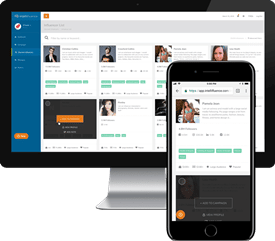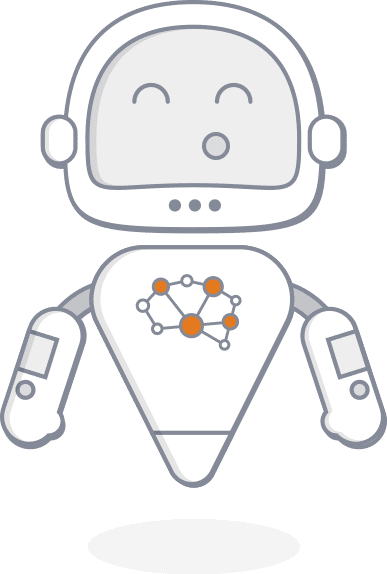In today’s digital landscape, consumers are inundated with information from every direction. For companies aiming to stand out, delivering relevant content at each stage of the buyer’s journey is crucial. This is where content organization comes into play. By strategically aligning content with the needs and interests of prospective customers, businesses can guide them smoothly from awareness to purchase. Moreover, integrating influencer marketing into this strategy can amplify reach and credibility. This article explores why companies should adopt content mapping, how to implement it effectively, content mapping examples, and the role of influencers in enhancing this approach.
What is Content Mapping?
At its core, content mapping is the process of planning and creating content that aligns with the specific needs of different audience segments at various stages of the buyer’s journey. It ensures that every piece of content serves a purpose, addressing potential customers’ questions and concerns as they progress towards a purchase decision.
A content mapping framework typically involves:
- Identifying buyer personas: Detailed profiles representing different segments of your target audience.
- Understanding the buyer’s journey: The stages a customer goes through before making a purchase—awareness, consideration, and decision.
- Aligning content types: Creating specific content tailored to each persona at each stage.
By following this content mapping framework, companies can deliver the right message at the right time, enhancing engagement and conversion rates.
The Elements of Content Organization
-
Audience Segmentation and Buyer Personas
To create relevant content, businesses must first understand who they’re talking to. Audience segmentation involves dividing the broader market into distinct groups based on characteristics like demographics, behaviors, and needs. From these segments, companies develop buyer personas—semi-fictional representations of their ideal customers.
Example: A skincare brand might identify personas like “Natural Nina,” a 30-something eco-conscious consumer, and “Busy Brenda,” a working mom seeking quick skincare solutions.
At intelliflunce, brands have the ability to filter influencers based on specialties in order to find personsas that would align with their company.
-
Content Hierarchy
A content hierarchy organizes content in a way that prioritizes information based on the buyer’s needs at each stage. It ensures that foundational content supports more detailed pieces, guiding the customer logically through their journey.
Example: Starting with a blog post on common skincare issues (awareness), linking to a guide on selecting the right products (consideration), and culminating in a product comparison chart (decision).
-
Content Scheduling
Consistency is key in maintaining engagement. Content scheduling involves planning when and where content will be published to align with marketing campaigns and audience activity patterns.
Strategy: Utilize content calendars to map out content distribution across various channels, ensuring a steady flow of information that keeps your brand top-of-mind.
The Buyer’s Journey Stages
Understanding the buyer’s journey is essential in content layout. Each stage requires different content types to effectively move the customer forward.
-
Awareness Stage
At this initial stage, potential customers realize they have a problem or need. Content should aim to educate and inform without overtly selling.
Content Examples:
- Blog posts addressing common pain points.
- Educational videos or infographics.
- Social media content highlighting industry trends.
-
Consideration Stage
Here, the customer defines their problem and researches solutions. Content should position your brand as a valuable resource.
Content Examples:
- In-depth guides or eBooks.
- Webinars featuring expert insights.
- Case studies showcasing problem-solving.
-
Decision Stage
The customer is ready to choose a solution. Content should reinforce trust and make the decision-making process easier.
Content Examples:
- Product comparisons.
- Testimonials and reviews.
- Free trials or demos.
Strategies for Determining Appropriate Content
Creating Buyer Personas
- Research: Gather data through surveys, interviews, and market analysis.
- Identify Pain Points: Understand the challenges each persona faces.
- Define Goals: Know what each persona aims to achieve.
Mapping Content to Each Stage
- Align Content Types: Match educational content to the awareness stage, solution-focused content to consideration, and promotional content to the decision stage.
- Address Questions: Anticipate and answer questions likely to arise at each stage.

Featured Influencer: Louis Polo
I’m a Lifestyle blogger with a deep inclination towards fashion and style. Sharing what inspires me with the intention to inspire others! I’ve had the pleasure to work with brands such as Armani Beauty, Amazon, Google, Vince Camuto, Fossil, Dove, and many [link-omitted] blog and social media channels are lifestyle-based and conduct a representation of clean and minimalist style.
Content Scheduling and Planning
- Use Content Calendars: Plan content release dates to maintain consistency.
- Monitor Performance: Adjust scheduling based on engagement metrics.
Incorporating Influencer Marketing into Content Framework
Influencer marketing leverages the reach and trust of individuals who have a significant following in your target market. Integrating influencers into your content strategy can enhance credibility and expand your audience. When you join Intellifluence as a brand, you gain access to over two hundred thousand influencers for potential collaboration. Brands can easily find influencers that align well with their needs by refining the database based on factors such as geolocation, specialties, social media platforms, and budget.
Role of Influencers at Each Stage
- Awareness: Influencers can introduce your brand to a broader audience through authentic content.
- Consideration: They can provide detailed reviews or tutorials, helping potential customers understand your offerings.
- Decision: Influencers can offer exclusive promotions or testimonials, encouraging conversions.
Example: A fitness apparel company collaborates with a well-known trainer who shares workout videos featuring their products (awareness), discusses the benefits of specific gear (consideration), and offers a discount code to followers (decision).
Strategies for Utilizing Influencer Marketing
- Select the Right Influencers: Choose individuals whose audience aligns with your buyer personas.
- Define Clear Objectives: Ensure influencers understand the goals at each stage of the buyer’s journey.
- Create Collaborative Content: Work with influencers to develop content that resonates authentically with their followers.
Developing Your Content Alignment Strategy
Step-by-Step Approach
- Define Your Buyer Personas: Use market research to create detailed profiles.
- Outline the Buyer’s Journey: Map out the stages specific to your industry.
- Audit Existing Content: Identify gaps and opportunities in your current content.
- Plan Content Hierarchy: Organize content to guide customers logically.
- Schedule Content Distribution: Use a calendar to plan releases across channels.
- Integrate Influencer Partnerships: Identify influencers and plan collaborative content.
- Monitor and Adjust: Use analytics to assess performance and refine your strategy.
Utilizing Influencer Marketing as a Component
Incorporate influencers into your content plan by:
- Setting Clear Agreements: Outline expectations, content guidelines, and compensation.
- Providing Resources: Supply influencers with product information and branding materials.
- Encouraging Creativity: Allow influencers to present your brand in a way that resonates with their audience.
Implementing a well-thought-out content strategy is essential for engaging prospective customers at every step of their journey. By delivering tailored content that addresses specific needs and concerns, companies can build stronger relationships and drive conversions. Incorporating influencer marketing enhances this approach, leveraging trusted voices to amplify your message.
Start by understanding your audience through buyer personas, plan your content hierarchy, and maintain consistency with content scheduling. Remember to tailor content to the stages of awareness, consideration, and decision. With these strategies, your brand can create a seamless journey that not only attracts but also retains loyal customers.

SallyBot is committed to helping users get the most out of Intellifluence. By helping brands create campaigns, providing unparalleled customer service and offering useful advice, nothing makes SallyBot happier than hearing she is liked… Really, really liked.






